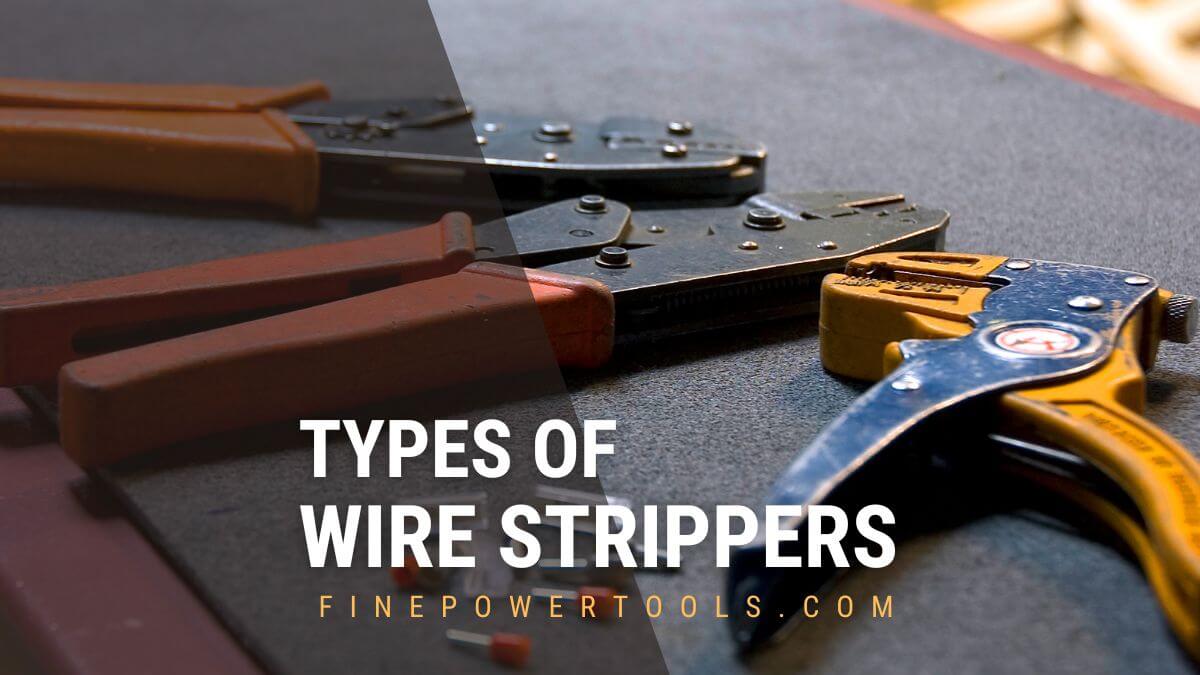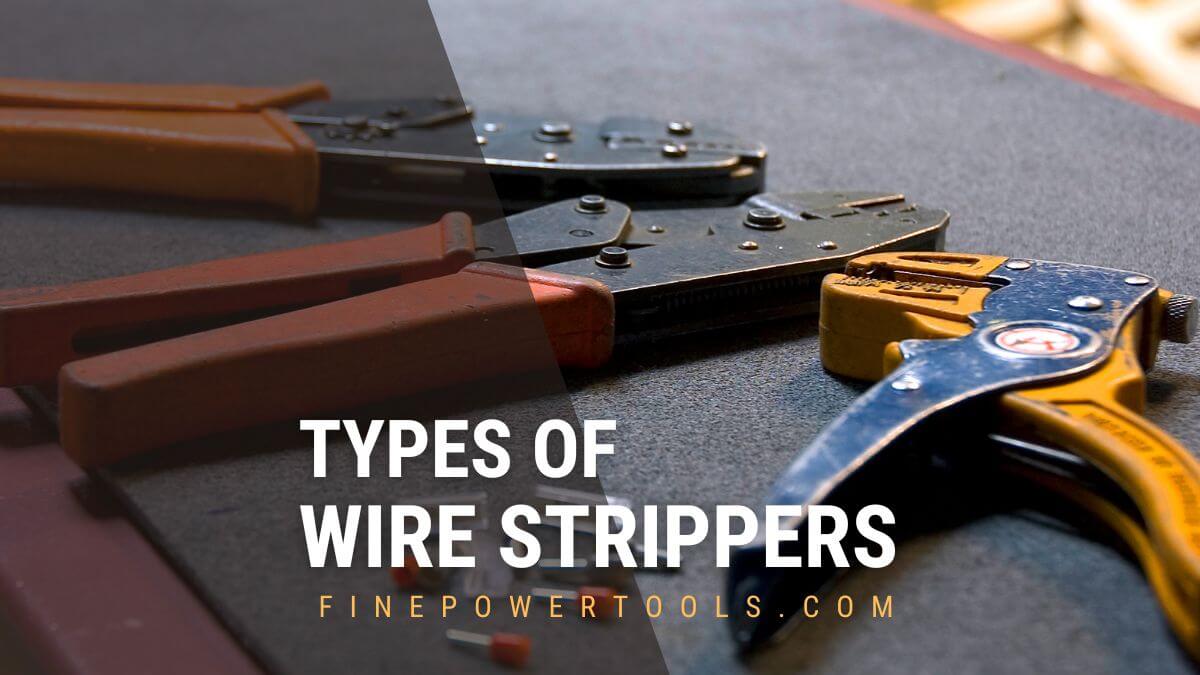
Overwhelmed by the several different types of wire strippers out there?
The wire stripper is an essential tool when you want to remove insulation from electrical cables to create perfect solder joints. While there are various models available, they can be broadly categorized into four main types:
- Manual wire strippers
- Automatic or Self-adjusting
- Pistol grip type and
- Thermal strippers
Let’s take a deep look at the each of these wire stripper types, their uses, pros and cons.
Manual Wire Strippers
This is perhaps the most common type of wire stripper today. While almost all wire strippers are hand tools, these models are known as “manual” because you must know or estimate the wire thickness before using them.
Some manual wire strippers have a stop screw for setting the desired wire thickness, which makes the process slightly slower but safer. Models without this screw rely on your judgment and experience to apply the proper pressure without reaching the wire’s core and damaging it.
1. Basic Manual Wire Strippers
Like all wire strippers of this kind, the basic manual wire strippers resemble a pair of scissors or cutting pliers.
The basic version usually have one side with slits to hold the wires and the other with sharp slits to cut the insulation. They have several slits with different diameters to work with varying wire thicknesses.
The version used in Europe, which is referred to as “shear-type” wire strippers has a different design. European-style wire strippers resemble notched pincers, often featuring an adjustable screw mechanism for depth control.

This tool is simple to use and are recommended for working with medium to thick wires. The lack of proper marking makes them the less precise wire stripper type.
2. Manual Wire Strippers with Openings and Holes (Marked Gauges)
This is perhaps the most common model of manual wire strippers today. They are very similar to the basic type but feature several openings and slits marked with gauge measurements in the AWM and metric standards.
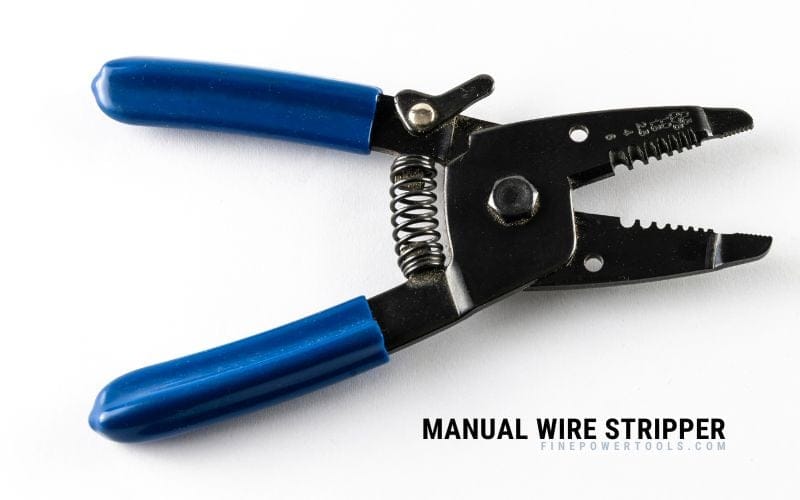
These strippers are easier to use than the basic models because you can select the right hole or slit based on the wire you are working with.
They come in different sizes, and depending on their size or gauge range, they are suitable for electric, electronic, or combined tasks.
3. Multi-Function Manual Wire Strippers
Multi-function manual wire strippers combine the convenience of marked gauge strippers with some extra features, such as incorporated plier-style wire cutters.
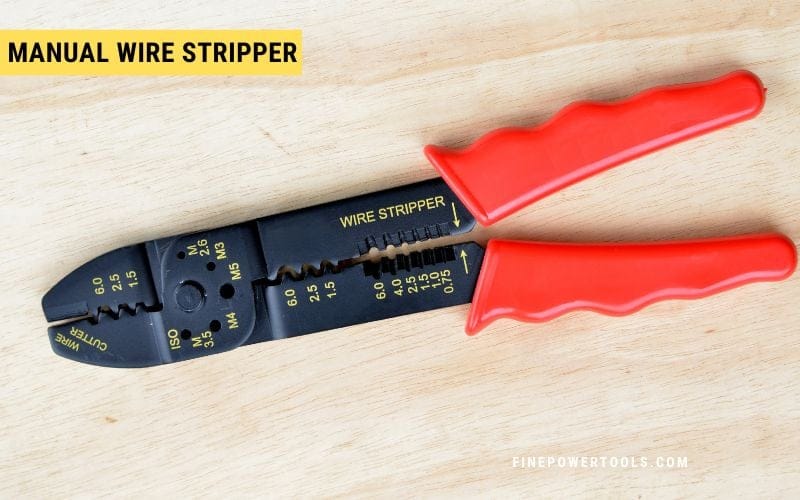
Some models also include crimpers for attaching wire terminals and connectors, making them versatile tools capable of handling various wire-related tasks.
These tools come in medium to large formats, making them well-suited for power electronics and electrical projects.
Self-Adjusting Wire Strippers
Self-adjusting or automatic wire strippers are also manually operated; however, their name comes from the complex mechanism that allows them to strip wires accurately without setting the wire thickness before operation.
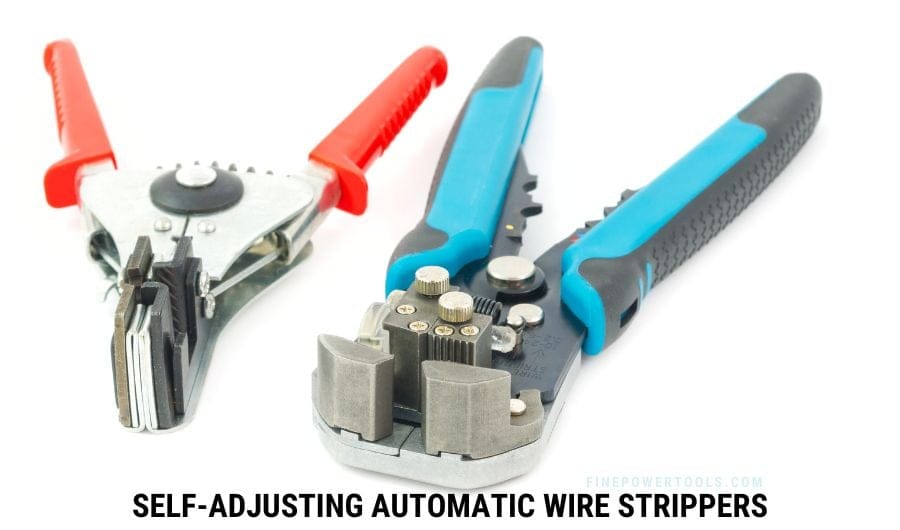
The most common type of self-adjusting wire stripper features handles that control a mechanism at the top of the tool. This mechanism resembles a pair of jaws.
Working Explained
When you squeeze the handles, the jaws open, allowing you to insert the wire and arming the mechanism, preparing the tool for the next step.
After opening the jaws, you can insert the wire and stop pressing the handles. This action causes the jaws to close, securing the wire in place, cutting the insulation, and removing it from the wire altogether. This upper part is usually called “the head”.
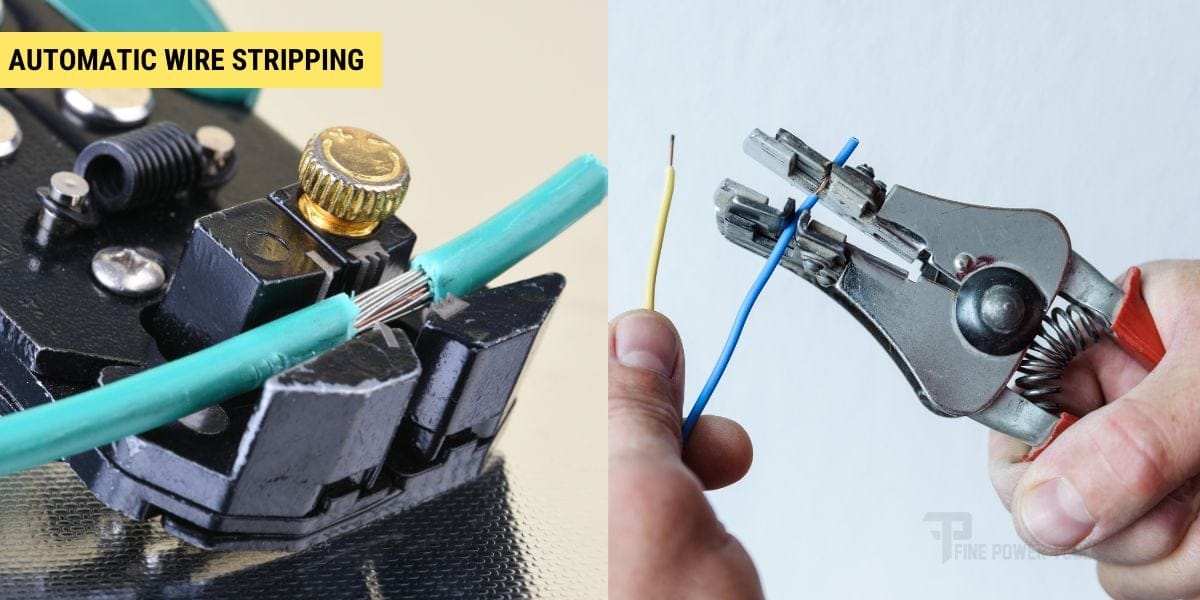
Depending on their size and specifications, these tools can strip different wire thicknesses, from thin and delicate wires used in electronics to large electric wires. They are highly effective in stripping the wires’ insulation without damaging or cutting wire strands while stripping them.
Pistol Grip Wire Strippers
Pistol grip wire strippers or wire stripping guns are a type of wire stripping tool that resembles a gun in shape and operation. These tools are designed for fast and efficient insulation removal.
Pistol grip wire strippers come in two main types: manual and self-adjusting.
Both types of guns operate in the same way; what changes is the level of precision of each one.
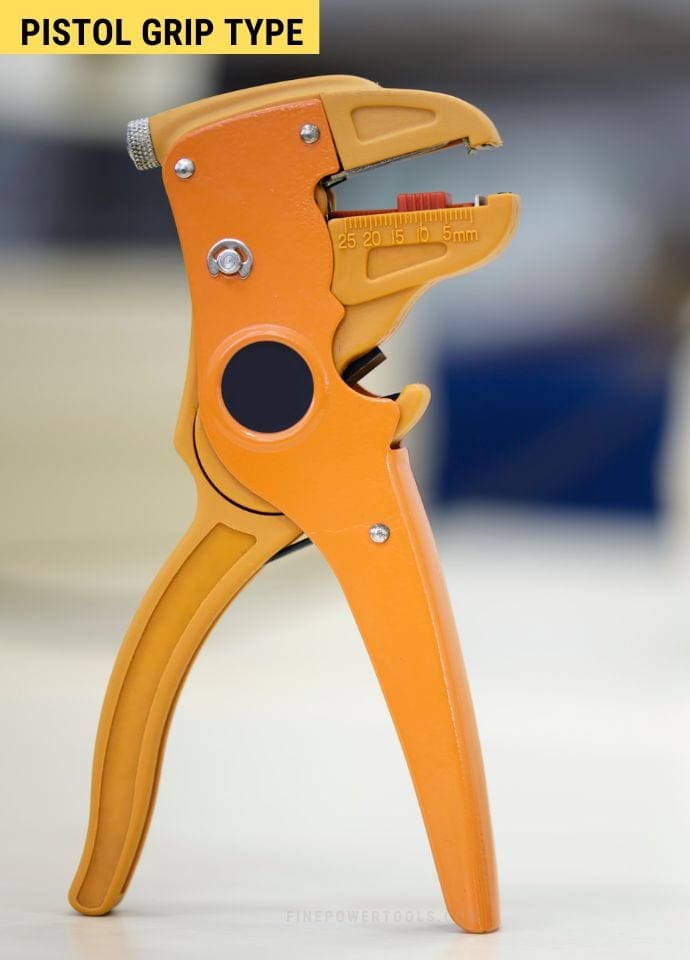
Let’s take a quick look at how they work:
- Loading the Wire: Operation starts when you insert the wire into the tool’s front end.
- Depth Adjustment: In manual pistol grip strippers, the depth of the cut is determined by how far you insert the wire into the tool.
These devices have two blades, one atop the other. The deeper you insert the wire, the deeper the cut will be.
Automatic models include a regulator and a scale with markings so that you can calculate how deep you should insert the wire. Other guns have depth regulators that work by limiting how deep you insert the wire, hence the cut’s depth. - Wire Stripping Action: When the cable is in place, you are ready to press the trigger, activating the stripping mechanism.
Both blades are pressed against the wire, cutting the insulation, and when they reach the set cutting depth, they move along the wire, cutting and removing the insulation simultaneously. - Releasing the wire: Once you release the trigger, it’s time to release it, removing the blades from the wire and allowing you to remove it from the tool.
Pistol grip wire strippers are recommended for electric and electronic applications where speed and practicality are fundamental.
However, it’s important to note that the most basic models are not recommended for working with delicate and thin wires because of their low precision compared to other wire stripping tools.
Thermal Wire Strippers
This type of wire stripper is ideal for sensitive wires or applications where high precision is critical.
How It Works:
Thermal wire strippers use heat to remove the insulation by melting it. They feature a pair of heaters that burn the insulation, preserving the conductor’s integrity.
The wire is inserted between the heaters, and the heat is transferred to the insulation, burning it
These tools are accurate to the point that they often come or are sold as accessories for reworking stations and high-precision electronics jobs.
Recommendation
No matter the type of wire you are stripping, it’s essential to avoid damaging its core.
- For medium to thick wires, especially stranded ones, I recommend using a good manual wire stripper with holes, openings, and markings.
- When dealing with multi-wire cables, I prefer combining a high-quality manual wire stripper for the outer layer and an accurate self-adjusting wire stripper for stripping the thinner internal wires.
- For electronic jobs, I use a medium self-adjusting wire stripper; it helps me to work accurately and fast.
Final Words
Wire strippers are affordable tools, so there is no reason to go for a cheaper one. Their prices go from $10 to $50, and you can find excellent products for about $30.
If you work in electronics or with thin wires, consider investing in a good automatic wire stripper.
For electrical work, industrial, or automotive wires, a great plier-type self-adjusting or gauged manual stripper is the way to go. If you can afford to buy more than one size, even better, as you will have a more versatile and complete toolbox.
